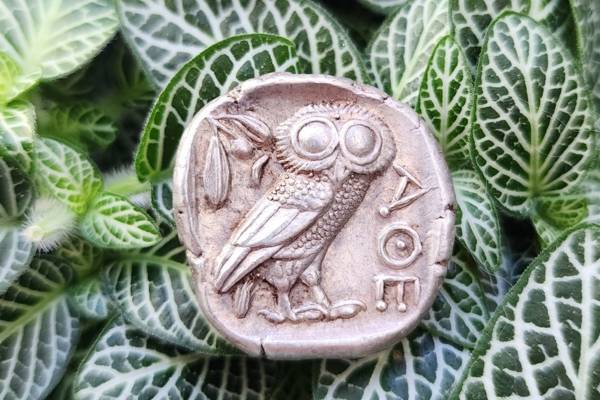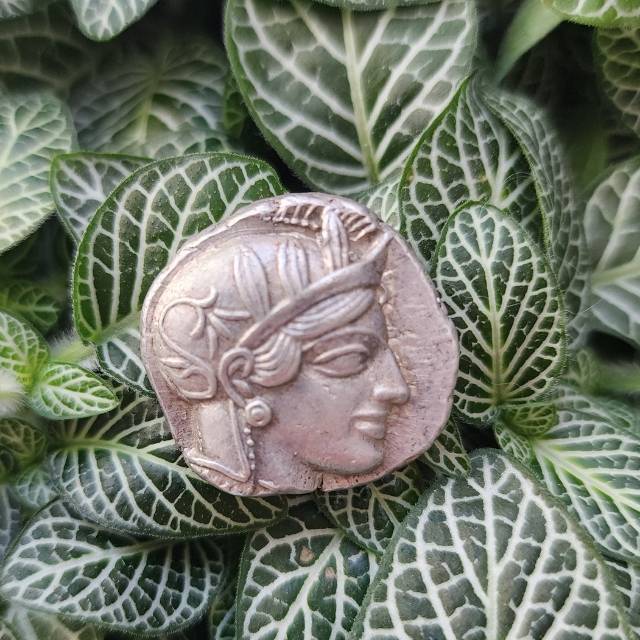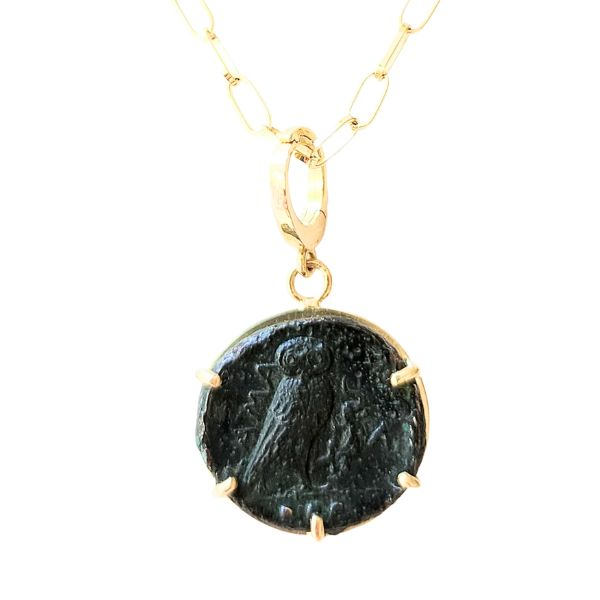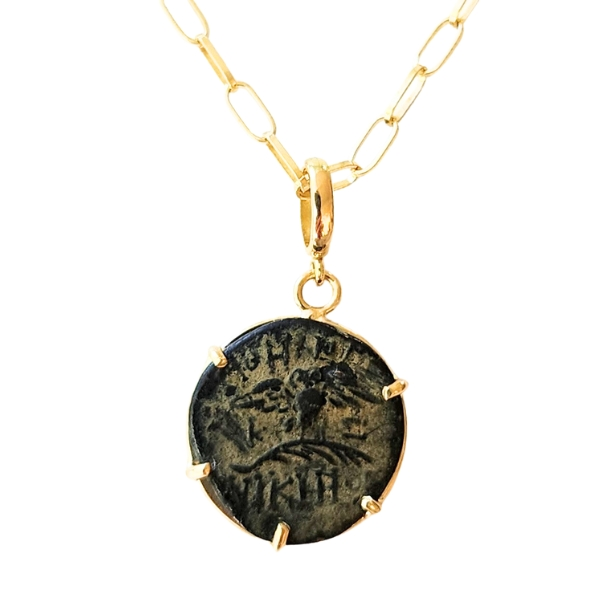Owls in Ancient Coins
Owls have captivated human imagination with their enigmatic nature, haunting calls, and piercing eyes.
- The Owl as Your Personal Talisman:
- Wisdom
- Protection from harm
- Prosperity
- Connection to the spirit realm
- Intuition and insight
- Guardian against ignorance and deceit
Owls in Ancient Greek Coinage:
Ancient Greek coinage is a remarkable testament to the Hellenic civilization's cultural, artistic, and economic achievements. Ancient Greek coinage was a means of exchange and a fascinating window into a society's culture and values.
The owl was a recurrent motif in Greek coinage, representing wisdom, intelligence, and the goddess Athena. The ancient Greeks believed that the owl was a companion of Athena, the goddess of wisdom, and it became a prominent symbol of knowledge and higher understanding.
The choice of the owl as a symbol on Greek coins was a deliberate choice meant to convey a message to the people. By featuring the owl on their currency, Greek cities sought to promote the importance of knowledge, wisdom, and good governance.
The owl motifs on ancient Greek coins were symbolic works of art. The engravers and artists who crafted these coins demonstrated exceptional skill and attention to detail. The owl coins were objects of great beauty, intricately designed, with their expression, feathers, beaks, and eyes meticulously depicted on a small piece of metal.
Athens:
The Athenian tetradrachms are the most recognizable examples of owl imagery in ancient Greek coinage. The tetradrachm was a silver coin that held significant economic and political weight in the ancient world. The front of these coins is the goddess Athena in profile wearing an Athenian crested helmet. The back of the coin showcased an iconic depiction of an owl with an olive branch—the symbol of peace and prosperity.

Sicily:
Syracuse, the most powerful and prosperous city-state in ancient Sicily, minted some of the most remarkable owl themed coins. The tyrants of Syracuse, like Gelon and Heiron, sought to establish their authority and greatness by emulating the coinage of Athens, which prominently featured the owl. This borrowing of iconography served political and cultural purposes, solidifying their reputation as sophisticated rulers.
The owl's presence on Sicilian coins held multiple meanings. It represented wisdom and knowledge, emphasizing the intellectual and cultural pursuits of the Sicilian city-states. The owl symbolized the city's alliance with Athens, showcasing the influence of Greek culture on Sicilian society. It also acted as a subtle assertion of authority and legitimacy, displaying the ruler's connection to Athena and associating themselves with divine wisdom.
Mysia:
Located in what is now modern-day Turkey, Pergamon was an ancient Greek city that thrived during the Hellenistic period, particularly from the 3rd century BCE onward. As the capital of the Attalid dynasty, Pergamon emerged as a prosperous center of culture, art, and learning. The region of Mysia, encompassing Pergamon, was renowned for its wealth, strategic position, and natural beauty.
The owl, often associated with wisdom and knowledge in various cultures, held a special place in the hearts of the people of Pergamon. The city's famous library, second only to the Library of Alexandria, attracted scholars from across the Hellenistic world. With its reputation as a symbol of wisdom, the owl became the chosen emblem for Pergamon's coins. The owl's presence on Pergamon's coins reinforced the city's cultural and intellectual standing in the ancient world.
Seleucid Empire:
The Seleucid Empire, a Hellenistic state from 312 BCE to 63 BCE, spanned vast territories, covering present-day countries such as Syria, Iraq, Iran, and parts of Turkey and Afghanistan. Pergamon was a part of the Seleucid empire but was left largely autonomous. The Seleucids adopted the Greek monetary system, which allowed for the spread of Hellenism associated with wisdom, intelligence, and foresight; owls were revered as creatures with profound knowledge and mystical powers—culture and commerce across their dominions. The coinage of the Seleucid Empire reflected this fusion of Greek and Persian influences.
Owls appeared on various Seleucid coins. The owl motif on these coins typically featured a frontal view of the owl, surrounded by intricate details and inscriptions.
- More Owl Symbolism:
- Ability to see in the darkness
- Good governance
- Good fortune
- Guide between the earthly realm and the spirit realm
- Heightened senses
- Intelligence





